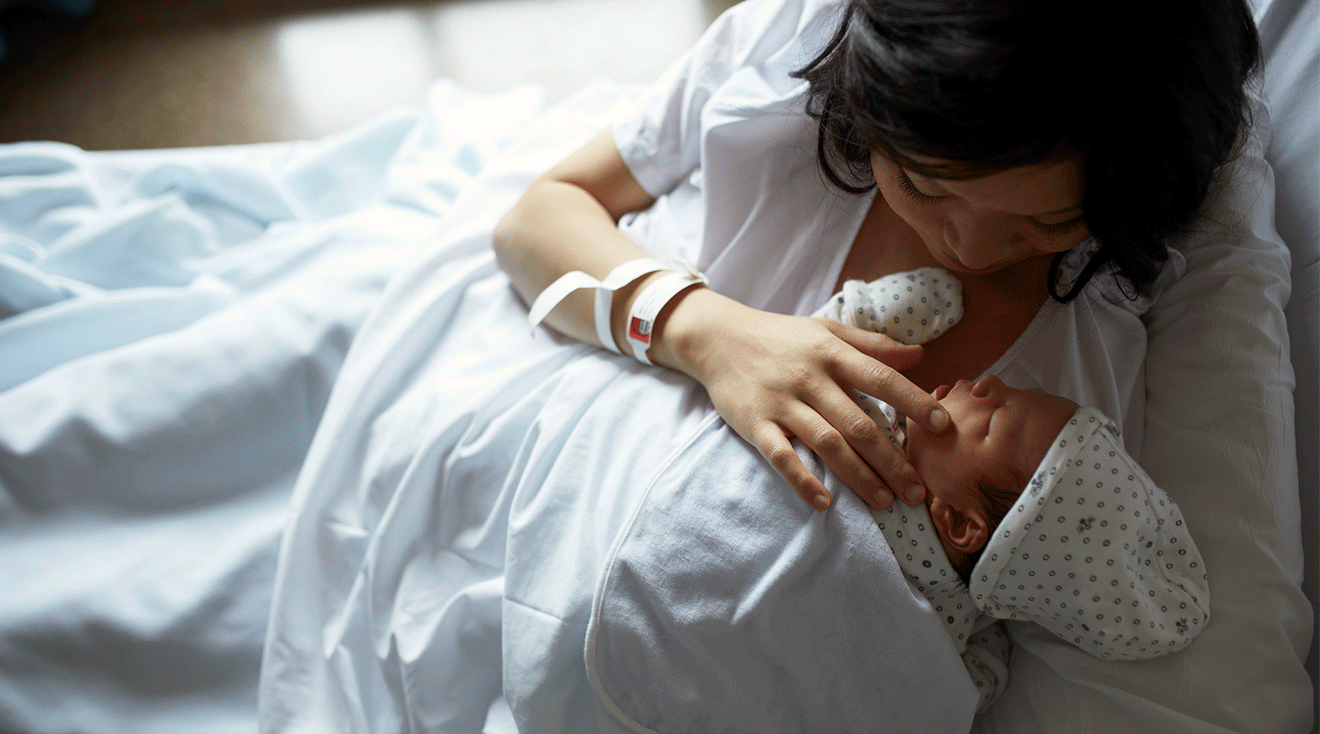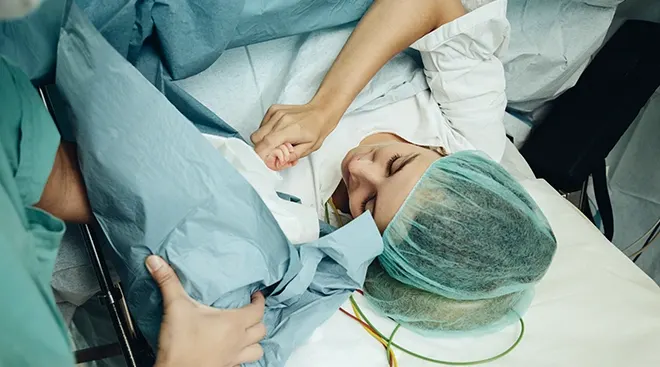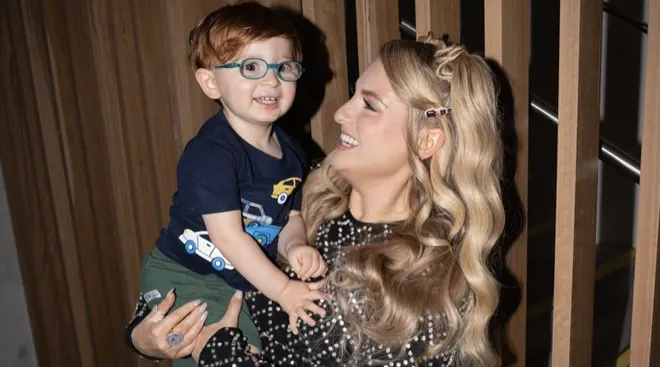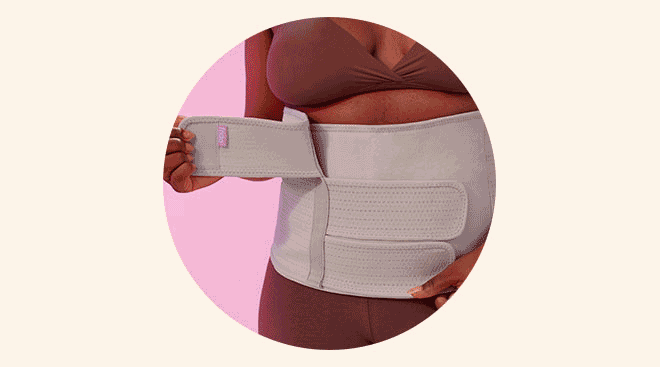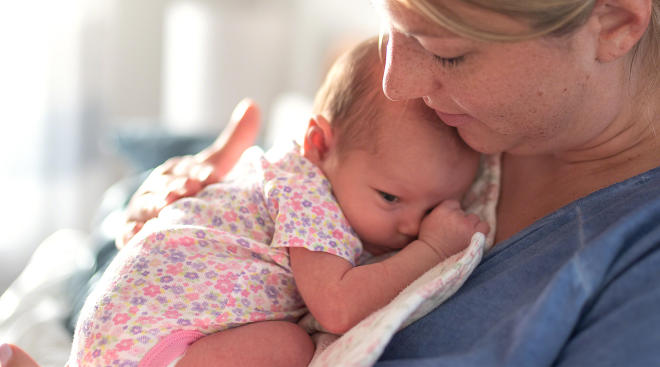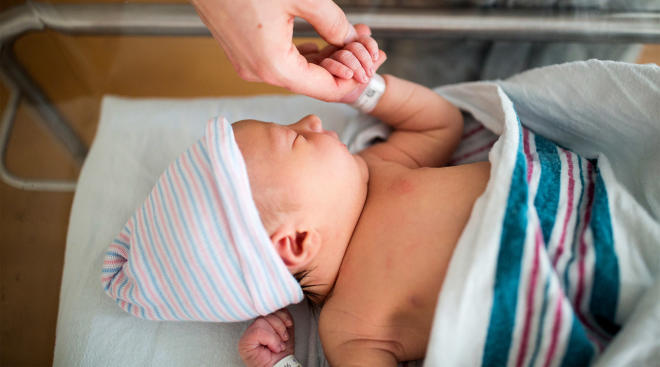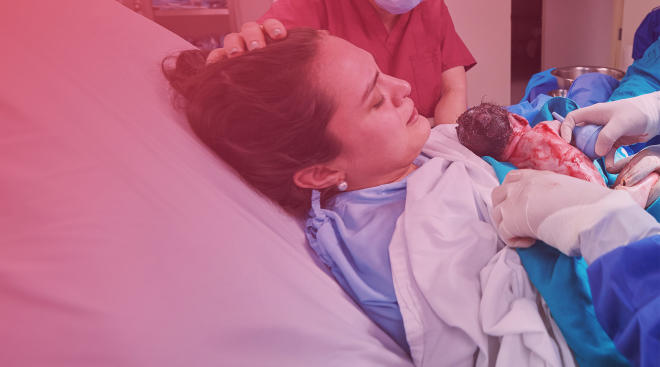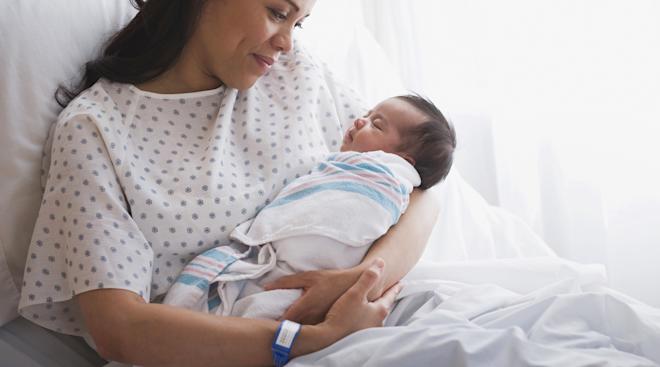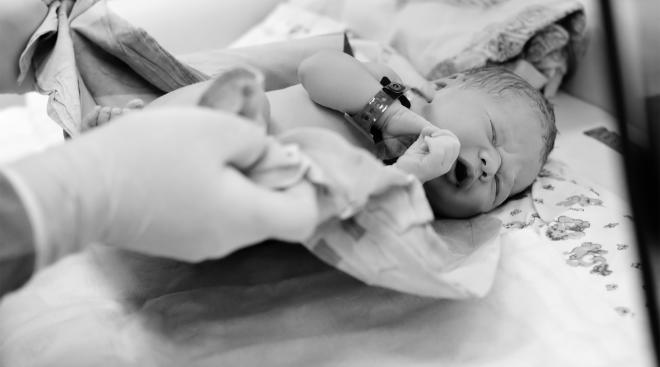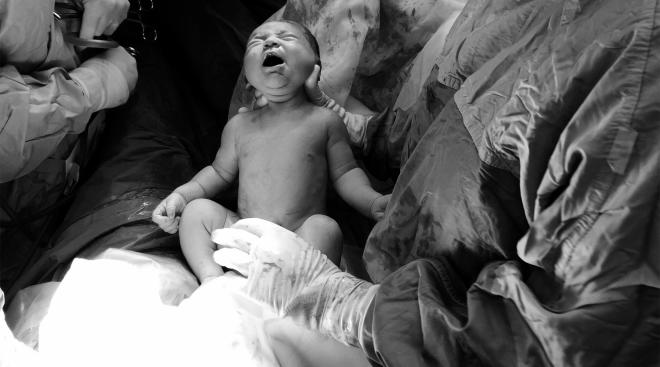Is Vaginal Seeding After a C-Section Safe?
You want what’s best for baby, so it’s natural to be curious about anything that might support their health and growth after birth. One thing you may have heard about in anticipation for a potential C-section is vaginal seeding. Basically, it’s a way to expose baby to the healthy bacteria that lives in your vagina. But the practice of vaginal seeding isn’t universally accepted in the medical community; in fact, it’s considered somewhat controversial. So how exactly is vaginal seeding done, and is it safe? Read on to learn more.
According to the American College of Obstetricians and Gynecologists (ACOG), vaginal seeding is a practice where vaginal fluid is applied to a newborn’s face after a C-section delivery.
The idea is to transfer healthy bacteria from the vagina to baby since they weren’t exposed during childbirth, explains Christine Greves, MD, an ob-gyn at the Winnie Palmer Hospital for Women and Babies in Orlando, Florida.
There’s no universally recommended approach to vaginal seeding. However, it usually involves putting some vaginal fluid on a cotton gauze or swab and then wiping it over baby’s mouth, nose or skin, per ACOG. The goal is to transfer the vaginal flora (the bacteria that naturally lives in the vagina) to baby, Greves says.
While, anecdotally, some people swear by vaginal seeding, it’s important to point out that ACOG doesn’t condone the practice outside of a research setting. The org notes that more data is needed to support potential benefits.
At baseline, people who support vaginal seeding say that it’s a natural way to expose baby to bacteria they would have come into contact with during a vaginal birth. A study published in the Proceedings of the National Academy of Sciences in 2010 found that babies born vaginally have microbiomes that are similar to those found in the mother’s vagina. Babies born via C-section, on the other hand, have microbiomes more akin to those on their mother’s skin.
“The whole reason that people were thinking about doing this is they noticed that some babies born by C-section are at an increased risk of allergies, asthma, Celiac disease, food allergies and irritable bowel disease,” Greves says. “The thought was, ‘Let’s swab some of the fluids to see if it’ll help.’”
But there’s no good data to support it, adds Eran Bornstein, MD, director of the Center for maternal-fetal medicine at Northwell Lenox Hill Hospital in New York City.
Bornstein stresses that there are potential risks to vaginal seeding. “If the mother has herpes, it can cause significant infection in baby,” he says. “One of the reasons to do a C-section is if [she] has an active herpes lesion.”
That said, herpes isn’t always easy to detect, Bornstein says. “If you take the vaginal fluid and smear it on the baby’s face, you may cause an infection,” he points out.
ACOG also flags the possibility of passing on other STIs like chlamydia and gonorrhea this way. And, if a parent insists on vaginal seeding after being advised not to do it, the baby’s pediatrician or family physician should be made aware of it due to the potential risks to baby’s health.
“The public is much more open to interventions that appear to be holistic, but we also have to look at these in terms of potential risks,” Bornstein says. Greves agrees: “There are too many unknowns to say that the benefits outweigh the risks. “We don’t know if it works or not,” she adds.
There aren’t any official alternatives to vaginal seeding. But, exclusively breastfeeding your little one for at least the first six months of life, may be helpful, according to ACOG.
“Talk to your pediatrician about your exact concerns,” Greves says. “Tell them your family history too. That’s the best thing you can do.” They may offer personalized guidance from there to help lower baby’s risk of developing whatever you’re concerned about, she says.
Please note: The Bump and the materials and information it contains are not intended to, and do not constitute, medical or other health advice or diagnosis and should not be used as such. You should always consult with a qualified physician or health professional about your specific circumstances.
Plus, more from The Bump:
Eran Bornstein, MD, is the director of the Center for maternal-fetal medicine at Northwell Lenox Hill Hospital in New York City. He earned his medical degree from the Sackler School of Medicine at Tel Aviv University.
Christine Greves, MD, is an ob-gyn at the Winnie Palmer Hospital for Women and Babies in Orlando, Florida. She earned her medical degree from the University Of South Florida College Of Medicine.
American College of Obstetricians and Gynecologists (ACOG), Vaginal Seeding
Proceedings of the National Academy of Sciences, Delivery mode shapes the acquisition and structure of the initial microbiota across multiple body habitats in newborns, June 2010
Navigate forward to interact with the calendar and select a date. Press the question mark key to get the keyboard shortcuts for changing dates.
































